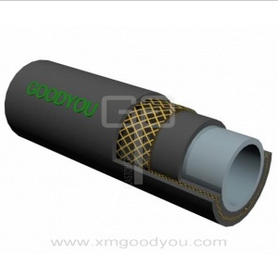In America two centuries later, it's time to come to grips with the liability faced by fire departments that fail to take heroic measures to protect employee health.
Numerous human studies demonstrate diesel exhaust exposure increases cancer risk. In fact, long term exposure to diesel exhaust particles poses the highest cancer risk of any toxic air contaminant evaluated by the California Office of Environmental Health Hazard Assessment.
Diesel engine fire trucks first appeared in the mid-1950s. Today, diesel power drives virtually all fire apparatus and emergency vehicles. Right from their introduction, the smoke that diesel apparatus emitted was regarded as unhealthy. At many firehouses some sort of tailpipe hose was jury-rigged to vent exhaust fumes outside through a window or under the door.
Nowadays - in addition to using the best available grade of fuel, minimizing running times, ventilating the building, exchanging fresh air, and keeping sealed doorways between garage and living quarters - there are limited ways of coping with the health risk of diesel smoke by building modifications in combination with aftermarket parts for fire apparatus.
Garage drop hoses and on-board diesel particulate filters are the two methods most often used to mitigate the hazard of diesel smoke in fire stations. Drop hoses are traditional and have some benefit, but you need to rethink whether drop hoses come even close to being adequate in light of today's environmental fervor.
Rubber air ducts hoses require manual connection. Even brief exposure offsets air quality gains from a parked truck connected to a hanging hose.
Hoses are sometimes called capture systems, which is a misnomer. Hoses do not capture contaminants; hoses blow raw exhaust outdoors. Diesel soot is microscopic with a long airborne residency. Particles blown outside by an exhaust air ducts hoses re-enter the building through doors which have to be open to allow the trucks in and out. This is called the canyon effect.
You'll never live to see the day a firefighter walks behind the wheels to try attaching exhaust hose to a moving truck. Fuel Injection Hoses are not attached when a truck is entering the bay, nor do they stay attached when the truck goes out the door. Therefore, a hose system is not very effective at all.So then, beyond drop hose, what can a fire department do to ensure that its personnel are provided with the best available health protection? One study by a private advocacy group, the R.I.C.H.T.E.R. Foundation, which is dedicated to diesel exhaust safety issues, concluded, "The most efficient and cost effective way to reduce emissions is to install diesel particulate filters in all diesel trucks and equipment used in fire stations."
With the coming of computerized engine ignition and ultra low-sulfur fuel, diesel particulate filters are much in vogue today.
The efficiency of the diesel particulate filter also poses its limitation. Filters clog. The rate at which they fill to capacity depends on fuel quality, the age and condition of the engine, and driving habits. Accumulation means periodic cleaning. As soot packs the filter channels, counter-pressure is created, which bogs down the engine. A close cousin of the diesel filter, in effect and principle, is the diesel exhaust brake, used on many heavy-duty trucks and buses.
A muffler is a silencer and also a spark arrestor. With a catalytic coating, it may be an oxidizer. Or used as a pre-filter.
Get more about information, welcome to feel free to visit xmgoodyou. Thanks for reading.













